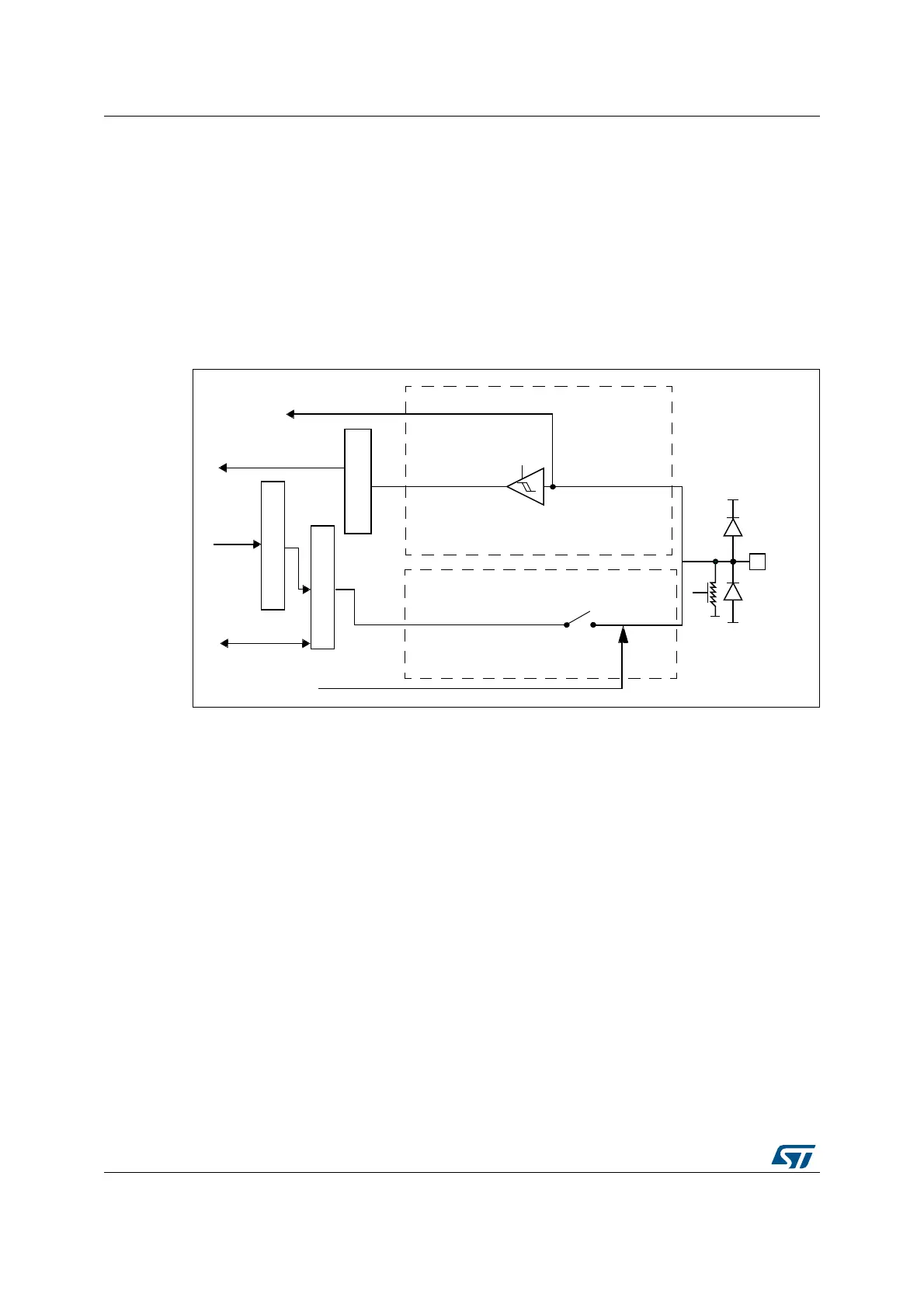General-purpose I/Os (GPIO) RM0440
358/2126 RM0440 Rev 4
9.3.12 Analog configuration
When the I/O port is programmed as analog configuration:
• The output buffer is disabled
• The Schmitt trigger input is deactivated, providing zero consumption for every analog
value of the I/O pin. The output of the Schmitt trigger is forced to a constant value (0).
• The weak pull-up is disabled by Hardware. The weak pull-down is configurable.
• Read access to the input data register gets the value “0”
Figure 30 shows the high-impedance, analog-input configuration of the I/O port bits.
Figure 30. High impedance-analog configuration
9.3.13 Using the HSE or LSE oscillator pins as GPIOs
When the HSE or LSE oscillator is switched OFF (default state after reset), the related
oscillator pins can be used as normal GPIOs.
When the HSE or LSE oscillator is switched ON (by setting the HSEON or LSEON bit in the
RCC_CSR register) the oscillator takes control of its associated pins and the GPIO
configuration of these pins has no effect.
When the oscillator is configured in a user external clock mode, only the pin is reserved for
clock input and the OSC_OUT or OSC32_OUT pin can still be used as normal GPIO.
9.3.14 Using the GPIO pins in the RTC supply domain
The PC13/PC14/PC15 GPIO functionality is lost when the core supply domain is powered
off (when the device enters Standby mode). In this case, if their GPIO configuration is not
bypassed by the RTC configuration, these pins are set in an analog input mode.
For details about I/O control by the RTC, refer to Section 35.3: RTC functional description.
off
Input driver
0
Read
Write
Analog
V
SS
V
D DIOx
I/O pin
MSv62540V1
TTL Schmitt
trigger
pull
on/off
down
V
SS
protection
diode
protection
diode
Analog
From on-chip
peripheral
Read/write
Output data register
Input data register
To on-chip
peripheral
Bit set/reset registers
